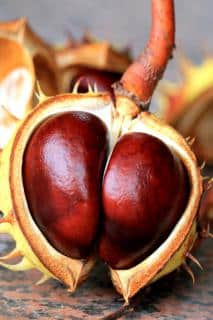

A constant source of pain, hemorrhoids are a dilation of the veins in the anal area (rectum and anus).
Like varicose veins in the legs, these are also permanently dilated veins. Hemorrhoids tend to swell when the patient releases stools. Which plants are effective to treat piles?
Today, in Western society, 50% of adults over age 50 complain of hemorrhoid problems.
This bothersome disorder of an intimate nature but very common is often difficult to talk about. However, “everyone has hemorrhoids” and the problem is when they get inflamed.
Can home remedies, self-medication, or over-the-counter drugs do the trick to alleviate the pain? If not, are there other alternatives? How about plants? Are they effective in soothing a bout of hemorrhoids? Which ones and how effective are they? Let’s have a look around…
Defined as being tumefied vascularized tissues situated in the lining of the anus and rectum, hemorrhoids often produce small blood clots or lead to minor bleeding during defecation.
These are the two types of hemorrhoids:
> External hemorrhoids
These are very sensitive because of the nervous fibers that cross around this area, they appear just under the skin of the anus opening and often swell.
Moreover, the patient often develops a blood clot in a dilated vein that leads to painful discomfort that is a hindrance to every day life.
> Internal hemorrhoids
Their denomination depends on how advanced they have become. This type of hemorrhoid forms either in the lower portion of the rectum or on the inside of the anus.
Thus:
The symptoms of hemorrhoids appear in various forms.
Generally, a hemorrhoid bout lasts several days, and then the symptoms disappear.
The patient, in most cases, complains of:
Usually, certain risk factors provoke hemorrhoid inflammation.
The following may be marked as interesting:
Also, certain persons are simply more at risk than others, and fall more “easily” victim to bouts of hemorrhoids.
These are mostly persons who:
These risk factors would be incomplete if we didn’t also list dietary habits that tend to increase risks: persons who like eating dishes with lots of gravy, milk, meats, hot spices and pepper, alcohol, coffee, whole-grain rice and white chocolate.
To soothes the itchiness and pain that is felt during a bout of hemorrhoids, some plants are loaded with well-known health benefits. What dosages must be prepared?
Indeed, some plants contain compounds such as flavonoids which have a beneficial protective activity on blood vessels.
These are among others:
 Horse chestnut tree from which the bark and chestnuts or conkers have substances that have good (stimulating and protective) effects on the veins and arteries through which blood is flowing. This includes aescin that also tends to control inflammation. These are thus recommended for less severe cases of hemorrhoids.
Horse chestnut tree from which the bark and chestnuts or conkers have substances that have good (stimulating and protective) effects on the veins and arteries through which blood is flowing. This includes aescin that also tends to control inflammation. These are thus recommended for less severe cases of hemorrhoids.To alleviate pain due to hemorrhoids, it is a good idea to drink it in the form of:
– drops – 5 to 15 drops daily until pain disappears, this should be enough.
– infusion – For this, in 1 quart (1 liter) water, toss 1 2/5ths oz (40 g) crushed horse chestnut and boil for about 5 minutes. Remove from heat and let sit for ten minutes or so. Drink 1 or 2 cups between meals for 3 weeks. Stop drinking then for 10 days, and then prepare a second 3-week course. You can add honey if you wish, to make it more palatable.
– whole fresh plant suspension – As regards dosage, one 5 ml measuring cap in a bit of cold water morning and evening is enough.
Thanks to the flowers that count flavonoids among their compounds, this plant is said to have properties that tend to close openings up, and also has a tonic action on blood vessels.
To make the list of hemorrhoid bout-soothing plants more complete, we can add:
There’s also:
One favored course of action is to recommend squatting when going to the toilet. Squatting is a more natural position than sitting on a seat. Sometimes devices exist to change the body position to a squat-like stance even when using conventional toilets.
In the case of some natural treatments against hemorrhoid bouts, some specialists recommend following Unani medicine guidelines, which involve pairing multiple plants together in the form of a hydrolate or essential oil to prepare a lotion boasting active, deep-penetrating functions.
Indeed, combining birch (antispasmodic, anti-infectious) with walnut (anti-inflammatory, wound-healing agent, antiseptic), witch-hazel (stimulates circulation) and smartweed (invigorating, haemostatic, astringent) results in soothing, wound-healing and especially reinforces vein linings.
In case of doubt or if symptoms persist, do get in touch with your consulting physician for advice, he will eventually prescribe a more adequate treatment.
We actually use the squat stool here at the nursing homes. It helps much better than the prune juice. Demographics in certain countries have also shown that squatting while passing motion will help reduce the incidence of constipation and hemorrhoid issues.
It’s very true that our body has been squatting for this delicate daily task for ages… I added a line in the article to reflect that, in case readers don’t reach the comment section!